We are in the first stages of pecan budmoth infestation. Last year was a very bad year for budmoth. We are seeing initial signs of infestation on young trees (generally 1—3 years old) as of the first week of April. Identifying budmoth at this time of the year is not easy since worms are very small.
Scouting & Biology
Scout for 1) webbing around newly developing leaves and 2) small necrotic (dark) spots on the tips of developing leaves. These are early signs of budmoth. You may see the caterpillar, but at this stage it is very, very small. It is cream-colored with a black head. As the caterpillar matures, it will turn yellow-green.
Adult moths start laying eggs in the Spring. Eggs hatch in about 6 days and young larvae begin feeding on the leaves. They then spin web to roll the leaves where they will bore into the shoot. They only do this for about three days. Once they get in the shoot, insecticide will not reach them. This is where they do the damage particularly if they get inside a terminal shoot. It takes about a month to complete a generation and can have 5 or 6 generations in a year.
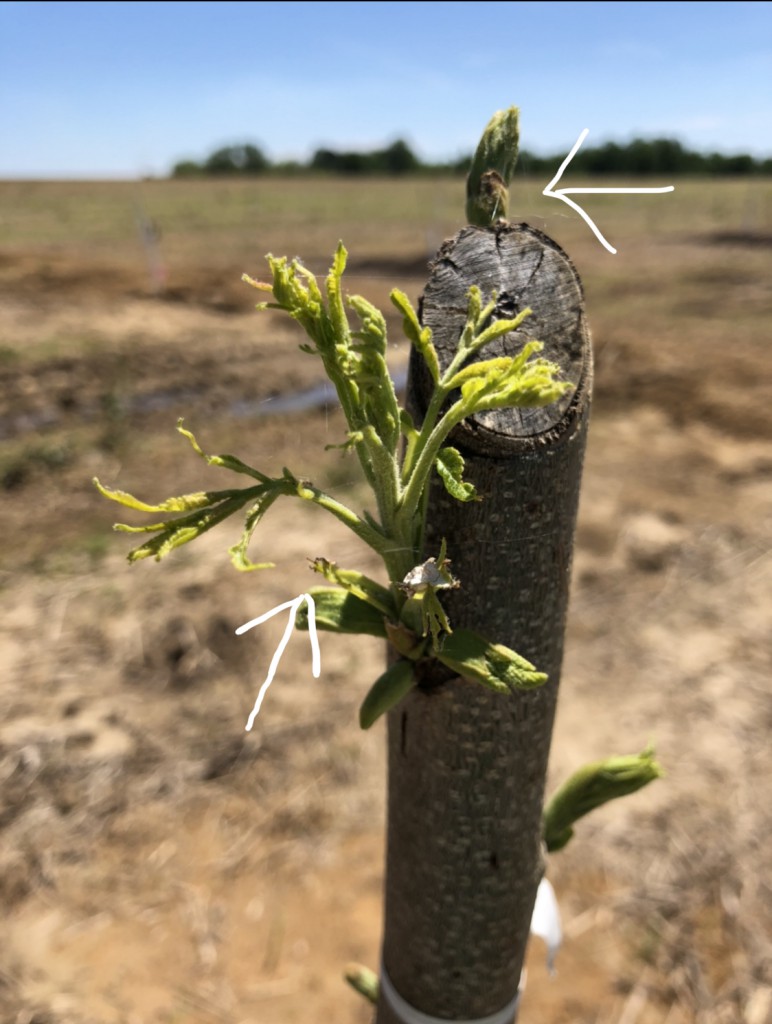
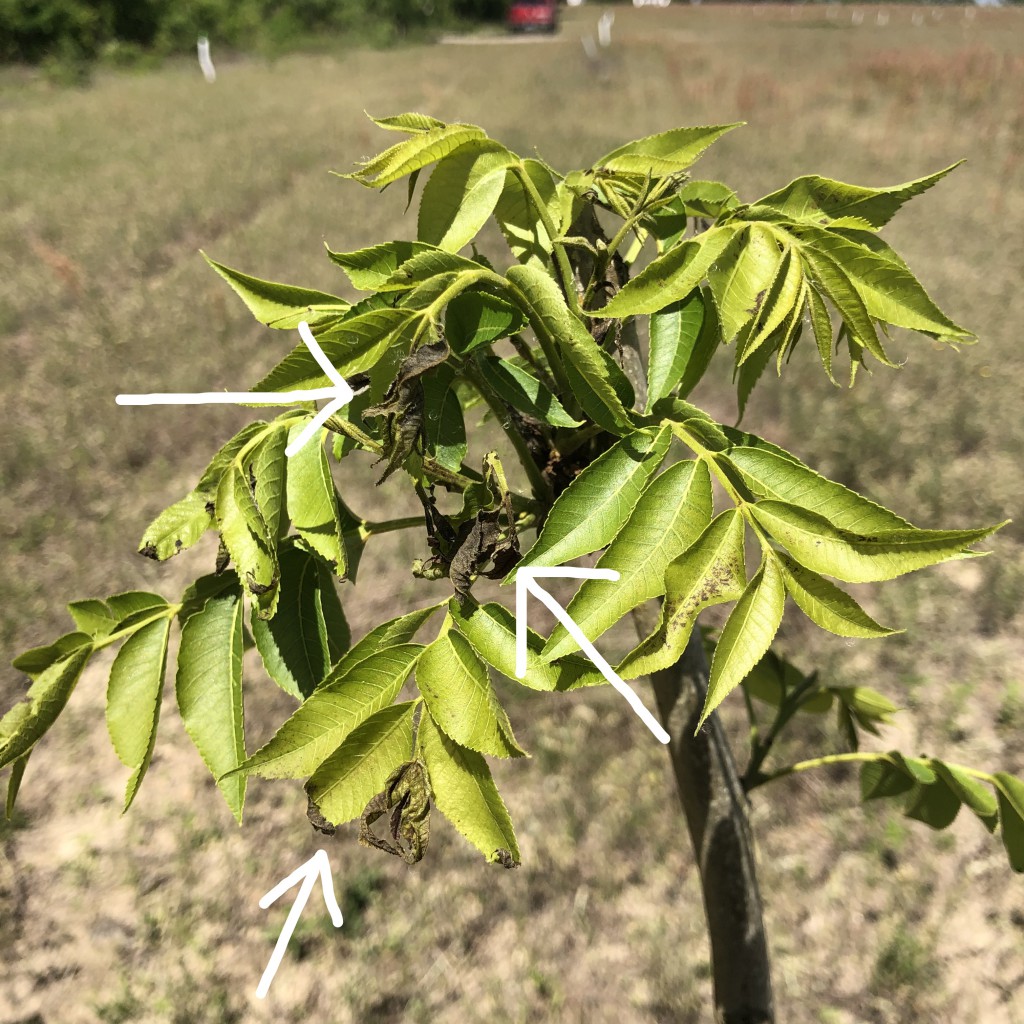
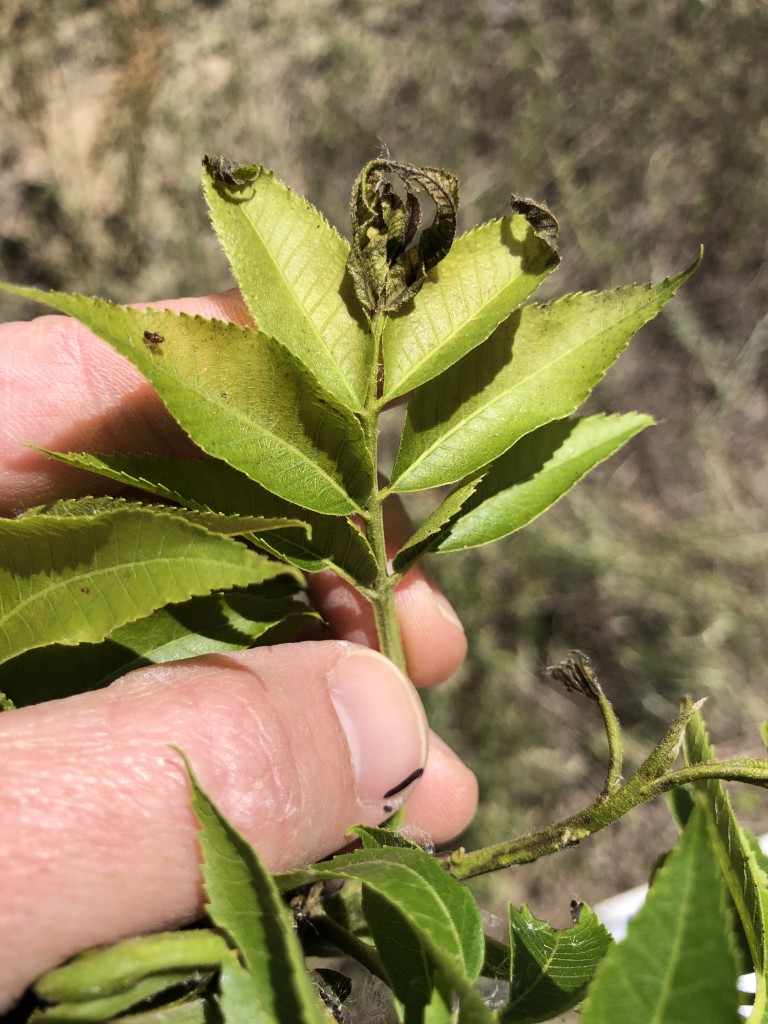
Should I spray my young trees at budbreak? Yes and no. It depends on how much time you can spend in the orchard. Since we have a small window to apply insecticide for control, spraying at budbreak is reasonable. If you have time to scout, treating at the first sign of infestation is fine.
What insecticide do I use? Worm materials are better to use if we catch budmoth outbreaks early. For one, they have a certain amount of residual and are effective weeks to come. If budmoth damage is severe and the initial outbreak was missed, Lorsban is the only option for quick knock-down.
Of all insecticides listed for budmoth control, each has a residual long enough to control the first generation. Some of these insecticides are absorbed into the plant but do not translocate. Some are not absorbed into the plant and Minecto Pro is systemic:
| Insecticide | Leaf Absorption/Translocation | Rate / 10 gallon |
| Intrepid | Not absorbed by leaf, not translocated | 1 oz |
| Intrepid Edge | Absorbed by leaf, not translocated | 1 oz |
| Dimlin | Absorbed by leaf, not translocated | 1.5 oz |
| Minecto Pro | Absorbed by leaf and translocated | 1.5 oz |
Insect damage that resembles budmoth:
Some growers will see larvae from sawflies (right) that strip leaves of young trees. They are typically seen on sporadic trees and do not require treatment. You can tell the difference by looking at prolegs on the underside. Sawflies have 7 pair of prolegs much more than a caterpillar. Do not count the first three pairs of legs near the head. Also sawflies are gregarious feeders, feeding in groups. There is a sawfly species that after feeding leaves behind shot-holes. Other species leave the leaf midrib untouched.
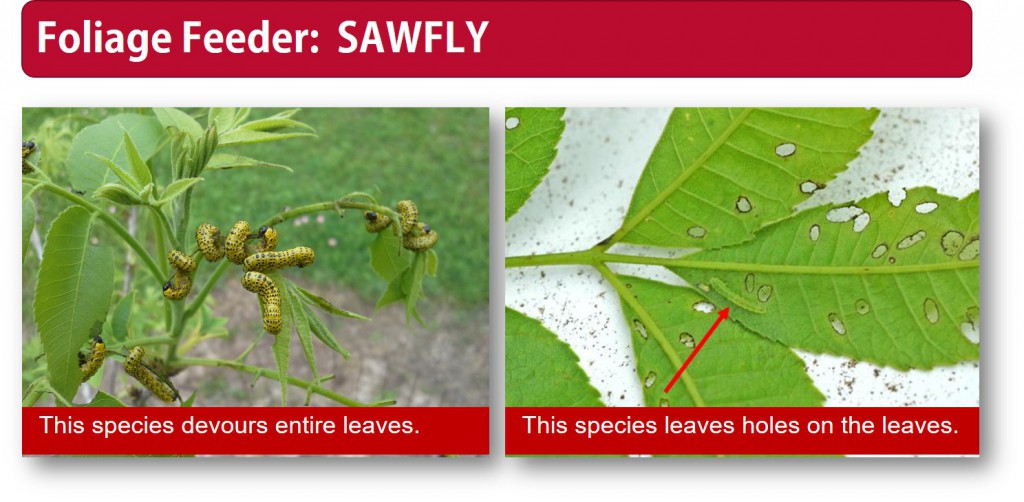
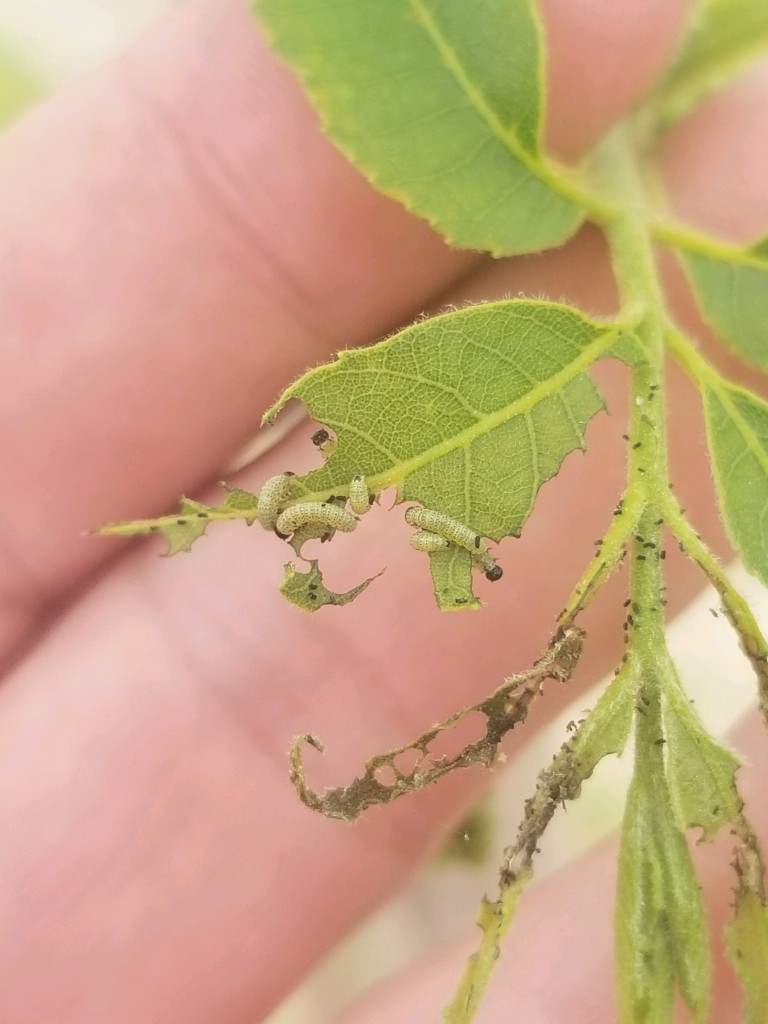
We also see damage from hickory shoot curculio along with budmoths. Shoot curculio is a weevil whose larvae bore into newly developing shoots leaving a tunnel. We do not see them cause consistent, significant damage.
Authored by: Angel Acebes-Doria, Andrew Sawyer and Will Hudson
